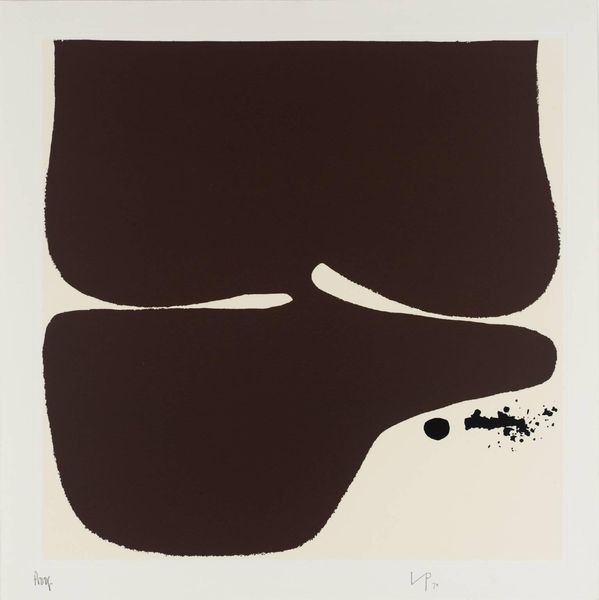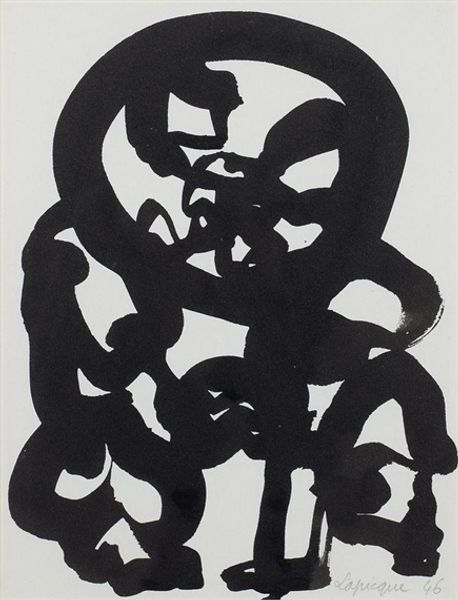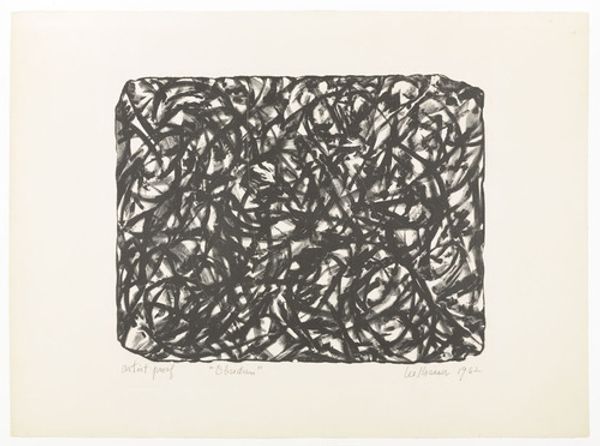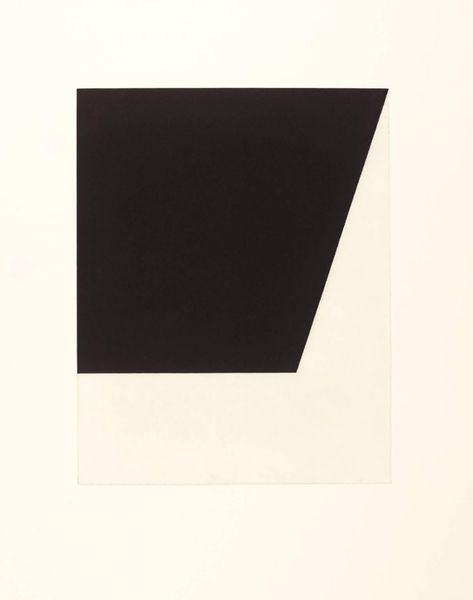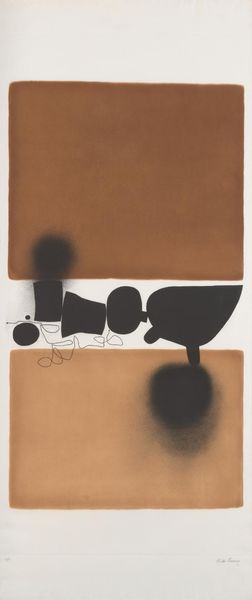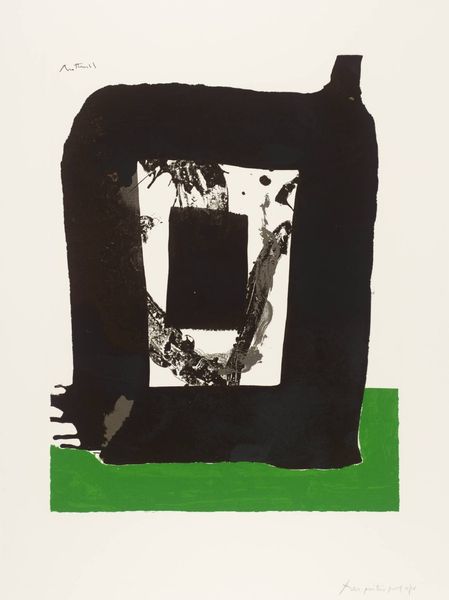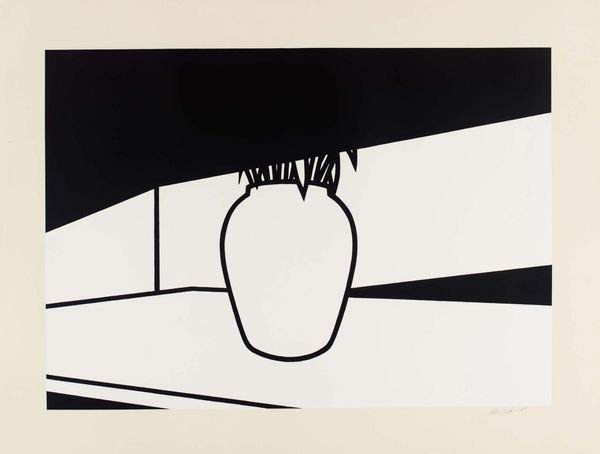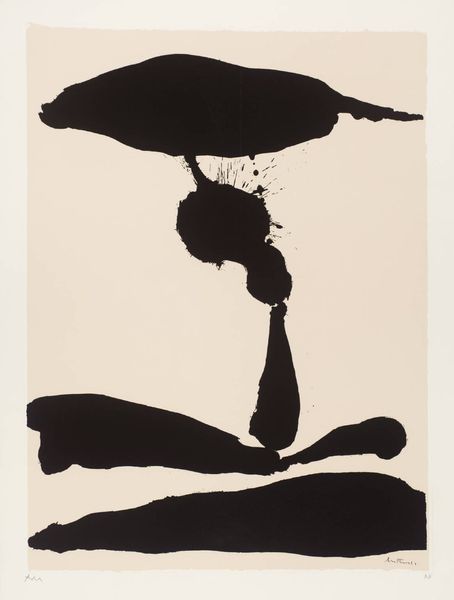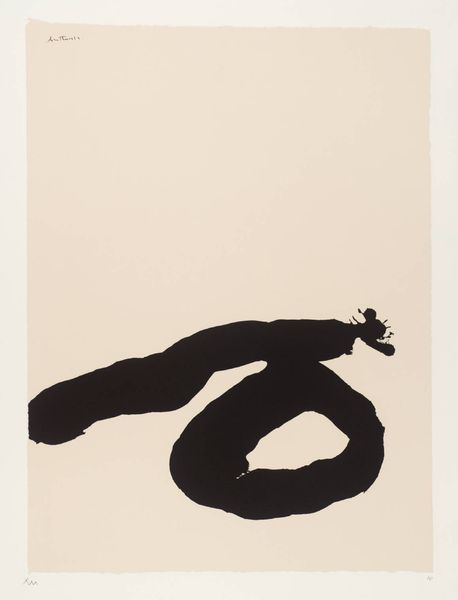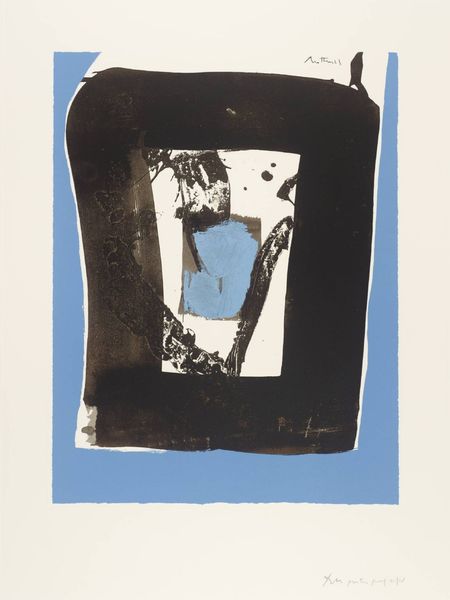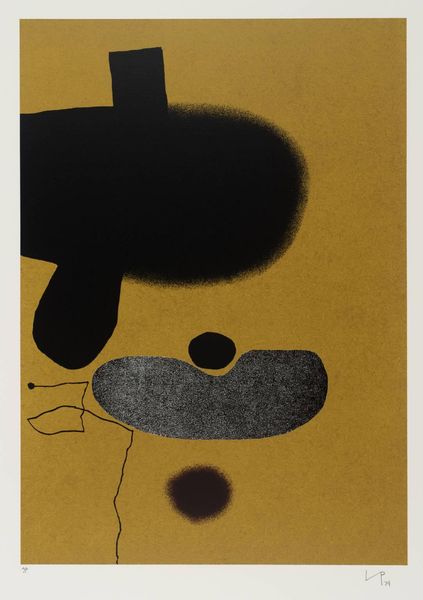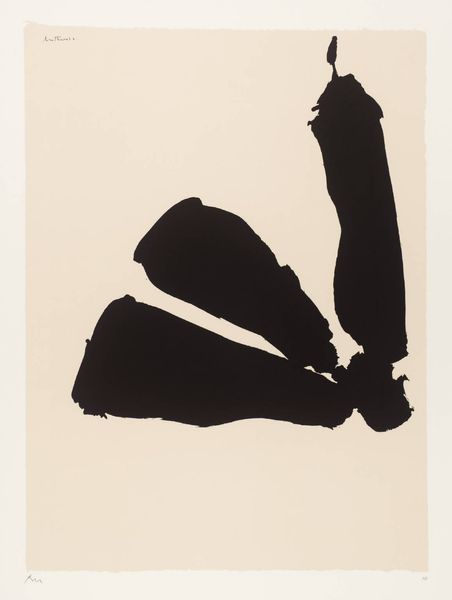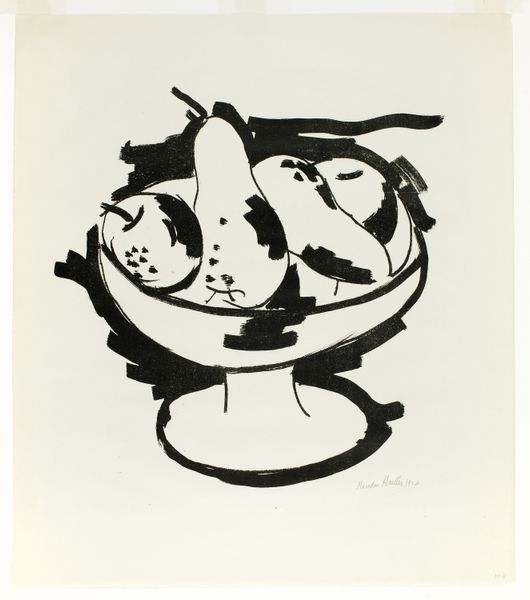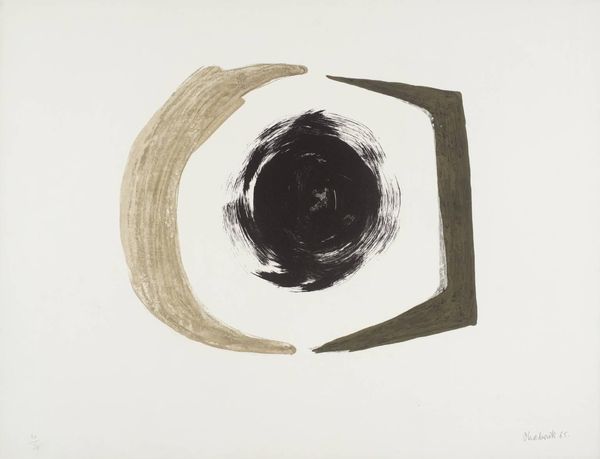
Dimensions: image: 415 x 422 mm
Copyright: © Tate | CC-BY-NC-ND 4.0 DEED, Photo: Tate
Curator: Victor Pasmore, born in 1908, was deeply interested in abstraction, and this example from the Tate collection is called "Transformation 5". It presents bold, curving black forms against a white background. Editor: It's so immediate. It feels weighty, almost like dark clouds about to burst. Is it a print? The stark contrast is really striking, yet those rounded shapes soften the overall effect. Curator: Yes, the interplay between the heavy black and bare white creates that tension. Pasmore was fascinated with the possibilities of pure form and its emotional impact, something he explored across different media. These shapes aren't meant to represent anything in particular, but perhaps evoke a feeling or sensation. Editor: I find it playful, too. The title suggests movement, change. It's as if these shapes are dancing, constantly morphing into something new before our eyes. Curator: Absolutely, and thinking of Pasmore's wider career, he often drew inspiration from the natural world, translating those observations into abstract compositions. He saw abstraction as a way to capture the essence of things, rather than a literal representation. Editor: It reminds me that transformation isn't always pretty or neat; it can be messy, bold, and even a little bit unsettling. Thanks for letting me see it in a new way.
